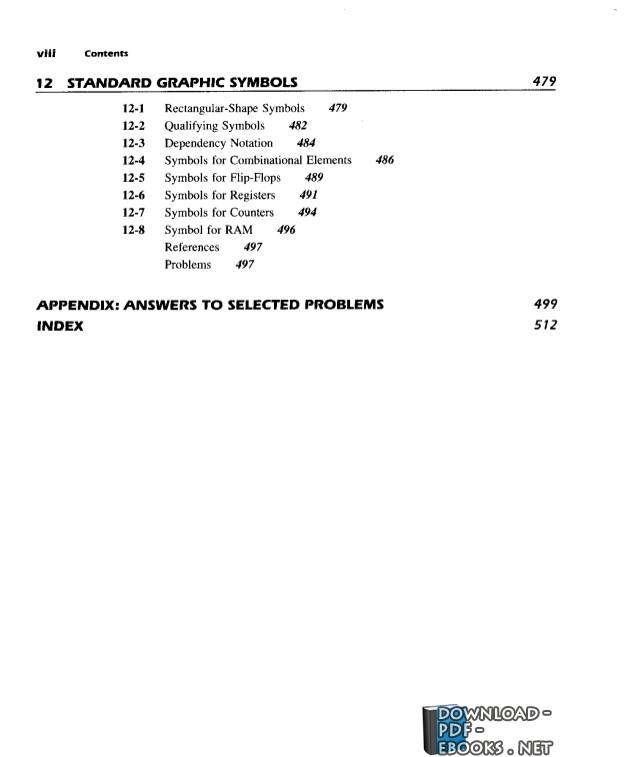📘 قراءة مذكّرة 06 – Registers and Counters :M. Morris Mano أونلاين


06 – Registers and Counters
BY :M. Morris Mano
Chapter 6
ters and Col
4.1 REClSf ERS
A clccked sequential circuit consists of n group of £lip-flops and combinational gates connected
to form a feedback path. The flip-flops are essential because. in their absence, the
circuit reduces to a purely combinational circuit (provided that there is no feedback among
the gates). A circuit with flip-flops is considered a sequential circuit even in the absence of
combinational gates. Circuits that include flip-flops are usually classified by the function
they perform rather than by the name of the sequential circuit. Two such circuits are registers
and counters.
A register is a group of flip-flops, each one of which is capable of ssroring one bit of
information. An n-bit register consists of a group of n flip-flops capable of storing n bits of
binary information. In addition to the flip-flops, a register may have combinational gates
that perform certain data-processing tasks. In its broadest definition, a register consists of
a group of flip-flops together with gates that affect their operation. The flip-flops hold the
binary information, and the gates determine how the information is transferred into the
register.
A counter is essentially a register that goes though a preduermined sequence of binary
states. The gates in the counter are corutectGd in such a way as to duce the prescn'bed sequence
of states. Although counters are a special type of register, it is common to differentiate
them by giving them a different name.
Various types of registers are avdable commercially. The simplest register is one that consists
of only flip-flops, without any gates. figure 6.1 shows such amgister constructed with four
D-type flipflops to form a four-bit data storage register. The common clock input triggers all
حجم الكتاب عند التحميل : 13.5 ميجا بايت .
نوع الكتاب : PDF.
عداد القراءة:
اذا اعجبك الكتاب فضلاً اضغط على أعجبني و يمكنك تحميله من هنا:

شكرًا لمساهمتكم
شكراً لمساهمتكم معنا في الإرتقاء بمستوى المكتبة ، يمكنكم االتبليغ عن اخطاء او سوء اختيار للكتب وتصنيفها ومحتواها ، أو كتاب يُمنع نشره ، او محمي بحقوق طبع ونشر ، فضلاً قم بالتبليغ عن الكتاب المُخالف:
 قبل تحميل الكتاب ..
قبل تحميل الكتاب ..
يجب ان يتوفر لديكم برنامج تشغيل وقراءة ملفات pdf
يمكن تحميلة من هنا 'http://get.adobe.com/reader/'


 منصّة المكتبة
منصّة المكتبة 